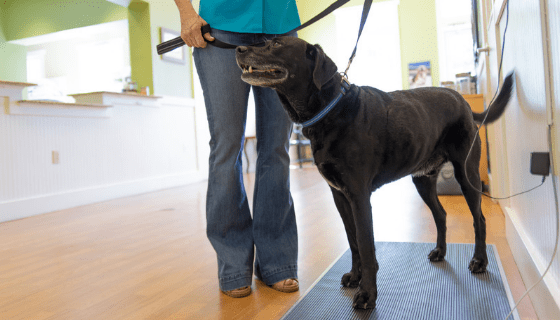
How to Make a Routine Dental Visit Comfortable for Your Pet
Most pet parents are aware of the importance of regular routine visits to their veterinarian in order to keep their pets in good health. One aspect of pet health that sometimes goes unnoticed, though, is dental health. Even though most of us brush our own teeth faithfully and visit the dentist regularly, it’s easy to forget that our pets’ teeth need care too.
It’s estimated that 85 percent of pets have periodontal disease by the time they are 3 years old! This can result in bad breath, which can be especially unpleasant if your pet likes to snuggle. However, there are other results of poor oral health that are much more serious than strong breath odor.

Periodontal disease can be painful for your pet. It can also result in tooth loss, which can lead to difficulty chewing. Even worse, bacteria from under your pet’s gums can enter the bloodstream and travel to their heart, kidneys, or liver. Thankfully, gingivitis and periodontal disease can be prevented with a good routine of oral hygiene. And even if your pet has developed periodontal disease, you can slow down the progression of the condition with proper care.
Talk to your veterinarian about caring for your pet’s teeth at home. He or she may recommend daily brushing or dental treats and chews to keep plaque and tartar from building up on your pet’s teeth. A home tooth-cleaning routine is important, but it’s also a good idea to have their teeth cleaned professionally every so often. Both Chilly and Olivia get routine dental cleanings every 2-3 years, depending on when my veterinarian recommends it. The American Animal Hospital Association (AAHA) recommends annual dental exams for both cats and dogs. The findings in the exam are what guides your vet in recommending a dental cleaning (dental prophylaxis).
Why Have Your Pet’s Teeth Cleaned Professionally?
A professional veterinary dental cleaning is similar to what your own dentist does for you. Your vet will remove plaque and tartar that you might be able to see on your dog’s or cat’s teeth. He will also remove bacteria that are lurking under their gums.
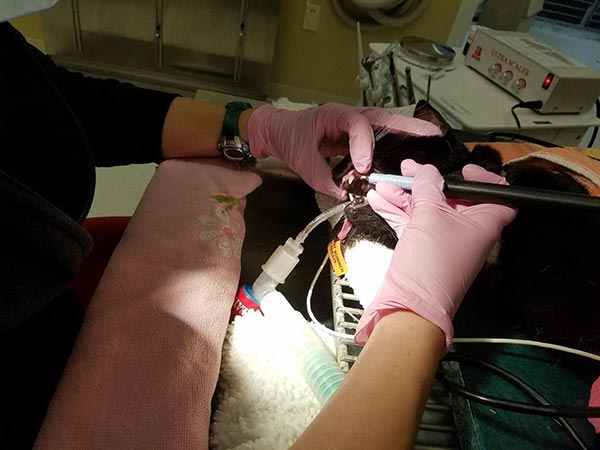
In addition to cleaning your pet’s teeth, your veterinarian will remove or repair fractured or infected teeth that could lead to painful problems. He or she will also take x-rays to reveal any problems below the gumline and inspect the lips, tongue, and mouth for wounds or any other issues that need attention. A thorough veterinary cleaning will also include the application of a fluoride or dental sealer to protect your pet’s teeth between visits.
One big difference between routine cleanings for humans and pets is that, in order to properly clean a dog’s or a cat’s teeth, they have to be put under general anesthesia. It only makes sense. After all, our pets can’t understand the reasons behind what’s happening as we can. Anesthesia spares your pet from experiencing anxiety or discomfort during the procedure, and it allows the veterinarian to do a much more thorough job without having to wrestle with a struggling animal or having to fear being scratched or bitten.
If you’ve ever had to have a surgical procedure that required the use of anesthesia, you may be familiar with that horrible, sickly, post-surgery feeling. It’s awful! Thankfully, our pets don’t have to have the same miserable experience when they wake up.
Pin me!

Making Teeth Cleanings Less Stressful
Many veterinarians may have a standard protocol to use CERENIAⓇ (maropitant citrate) to prevent vomiting in dogs undergoing dental cleaning procedures, or any before any other surgery when opioids are used as a pre-anesthetic.

Dr. Cole at St. Francis Pet Care Center, where I take Olivia to have her teeth cleaned, told me that they routinely use CERENIA (injectable form) in their surgical procedures on dogs and to make sure they don’t suffer from nausea and/or vomiting that can occur during surgery or recovery.1
Olivia’s most recent cleaning went really well, thanks in part to this treatment. She was her usual sweet self and very alert when I brought her home from the hospital, which was pretty impressive since she’s 14 years old!
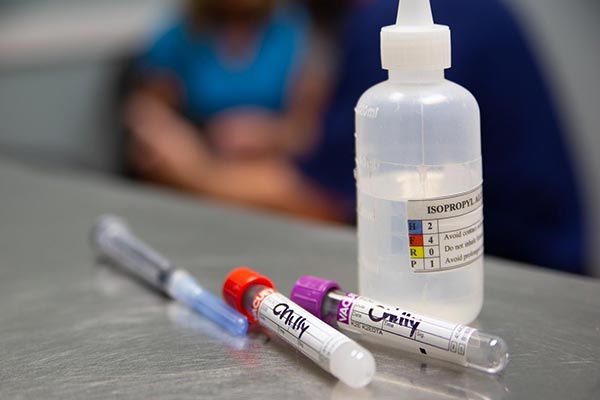
Using CERENIA to prevent vomiting can help your dog have a more comfortable recovery after dental procedures or surgery. Preventing vomiting can improve your pet’s quality of life, but it can also improve the bond you share with them. Vomiting is stressful and uncomfortable for pets, but it’s no fun for pet parents either. If your pet is vomiting, then you’re worried about them, not to mention having to clean up after them. Pets sense anxiety in their parents, which may lead to further worry for them. A little prevention can spare everyone a lot of stress!
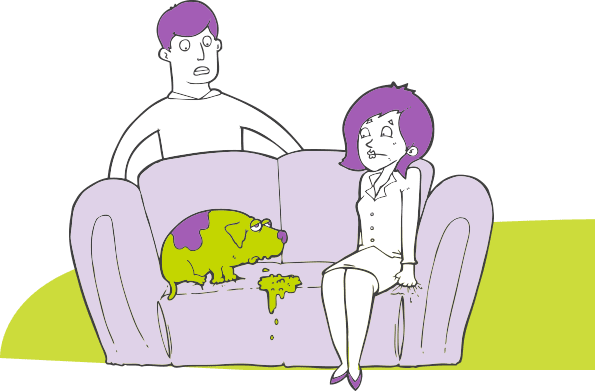
I was happy to learn that using CERENIA is a routine protocol for many veterinarians before surgical procedures. However, it may not be standard protocol for your vet. Before your dog undergoes any dental or other surgical procedure, ask your veterinarian if they use CERENIA, or if they would be willing to per your request.
1 Ramsey et al, Cerenia Prevents Perioperative Nausea and Vomiting and Improves Recovery in Dogs Undergoing Routine Surgery, Journal of Applied Research in Veterinary Medicine, Cerenia Prevents Perioperative Nausea and Vomiting and Improves Recovery in Dogs Undergoing Routine Surgery, December 2013, Journal of Applied Research in Veterinary Medicine, 12(3):229-238
IMPORTANT SAFETY INFORMATION: Use CERENIA Injectable for vomiting in cats 4 months and older; use subcutaneously for acute vomiting in dogs 2 to 4 months of age or either subcutaneously or intravenously in dogs 4 months of age and older. Use CERENIA Tablets for acute vomiting in dogs 2 months and older, and for prevention of vomiting due to motion sickness in dogs 4 months and older. Safe use has not been evaluated in cats and dogs with gastrointestinal obstruction, or those that have ingested toxins. Use with caution in cats and dogs with hepatic dysfunction. Pain/vocalization upon injection is a common side effect. In people, topical exposure may elicit localized allergic skin reactions, and repeated or prolonged exposure may lead to skin sensitization. See full Prescribing Information.
Kristen Levine has a consulting relationship with Zoetis Petcare.
CER-00439

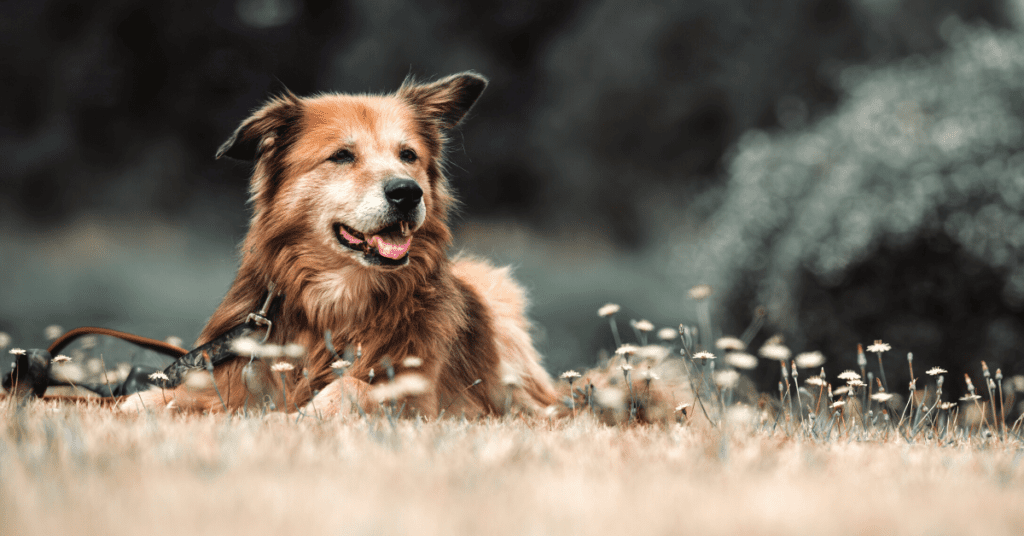

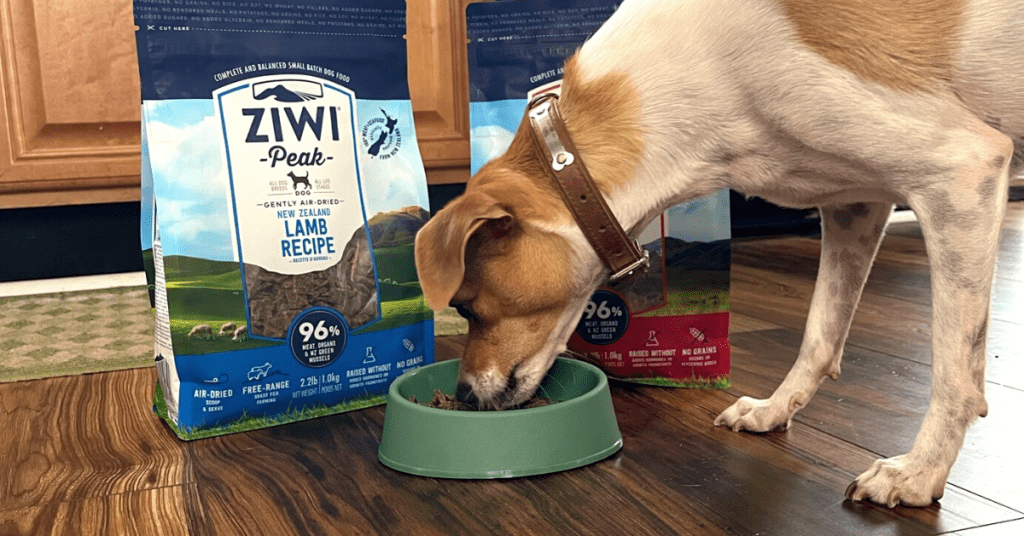



That’s good to know that anesthesia will help your dog to be a lot more comfortable. I like the idea of making sure that his teeth are well taken care of, so that would probably make doing so a lot easier. I’ll have to ask about anesthesia if I take my dog in to get his teeth cleaned.
Hi Tyler,
Yes, when your pet is under anesthesia for a dental cleaning the vet is able to take more time to examine the mouth. It is a sure way to be positive that your vet got all of the tartar, plaque, and could examine any potential issues!
Glad this helped!
Kristen